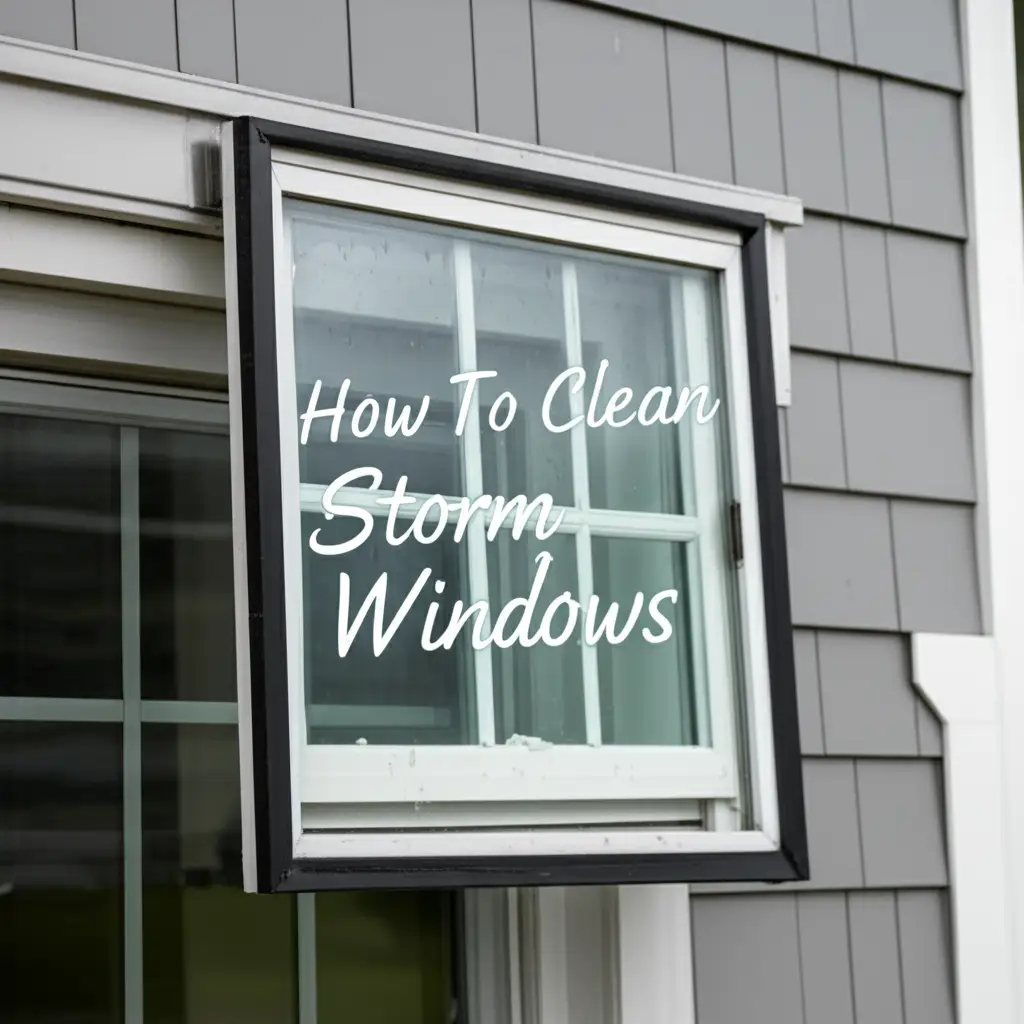· Window Cleaning · 12 min read
How To Clean Tilt In Windows

Clean Your Tilt-In Windows Easily and Effectively
Dirty windows block natural light and diminish your home’s appearance. You might think cleaning the outside of windows is a difficult task. However, if you have tilt-in windows, the process becomes much simpler. Learning how to clean tilt in windows properly makes this chore easy and efficient.
Tilt-in windows offer a fantastic solution for homeowners. They allow you to clean both sides of the glass from inside your home. This guide provides a full overview of how to achieve sparkling, streak-free windows. We cover everything from gathering your tools to tackling tough grime. Let’s make your windows shine.
Takeaway:
- Gather the right tools before you start.
- Prepare your windows by removing screens and tilting sashes correctly.
- Use gentle cleaning solutions for regular dirt and specific solutions for tough spots.
- Clean frames and tracks for smooth window operation.
- Maintain your windows with regular cleaning for lasting results.
Cleaning tilt-in windows is straightforward. You carefully open and tilt each sash inward. This makes both glass surfaces accessible from inside your house. Then, you clean the glass with a mild solution and soft cloths. Finally, you wipe the frames and tracks before closing the windows.
Understanding Your Tilt-In Windows
Tilt-in windows are a smart design choice for many homes. They offer great convenience for cleaning and maintenance. These windows have sashes that pivot inward from the top. This allows you to reach the outer surface of the glass without stepping outside. Understanding their mechanism helps you clean them safely.
Most tilt-in windows are either single-hung or double-hung. A single-hung window has a fixed top sash and a movable bottom sash that tilts in. Double-hung windows have both top and bottom sashes that can move up and down, and both can tilt inward. This design makes cleaning high-level windows much safer.
The tilting feature relies on pivot bars or latches on the sides of the sashes. These parts allow the window to release from the frame and tilt. Familiarize yourself with how your specific windows operate. This ensures you do not damage them during the cleaning process. Knowing your window type helps you clean more effectively. If you have double-hung windows, this feature is a big benefit.
I always appreciate how tilt-in windows simplify a chore that used to require a ladder. This design truly makes window maintenance a breeze. This design makes cleaning accessible and safe for everyone.
Essential Tools and Cleaning Solutions
Having the right tools makes window cleaning much easier. A few basic items are all you need for sparkling tilt-in windows. Gathering everything beforehand saves you time and effort during the cleaning process. I always prepare my cleaning station before I begin.
First, you need two buckets: one for your cleaning solution and one for rinse water. A good quality squeegee is key for streak-free results. Make sure your squeegee blade is in good condition. You will also need several microfiber cloths or lint-free rags. These work well for wiping frames and drying edges.
For cleaning solutions, a simple mixture of warm water and a few drops of dish soap often works perfectly. For a natural, streak-free shine, many people prefer a solution of equal parts white vinegar and water. This is especially good for tackling light grime. If you face hard water spots on windows, vinegar helps dissolve them. I find this mix effective and gentle.
Consider a small brush or old toothbrush for cleaning tracks and corners. Safety gear like gloves can protect your hands from cleaning solutions. If your windows are very high, a step stool might be useful. Always prioritize your safety when working.
Preparing Your Tilt-In Windows for Cleaning
Proper preparation is important for an effective window cleaning session. You need to make sure the area around the window is clear. This prevents any accidental damage. Getting your windows ready correctly helps achieve the best results.
Start by removing any curtains, blinds, or window treatments. This gives you full access to the window and frame. Next, gently dust the window frames and sills with a dry cloth or a brush. This removes loose dirt and prevents it from turning into muddy streaks when you start washing. I always dust first.
The next step is to remove window screens. Screens can hold a lot of dust and pollen. They also make it hard to reach the outer glass. Most screens lift out or unlatch easily. Clean screens separately by hosing them down or wiping them with a damp cloth. Let them dry fully before putting them back.
Now, you can tilt the window sashes inward. For most tilt-in windows, you unlock the window, then push in the release latches on both sides of the top sash. Gently pull the top sash inward until it rests securely. Repeat this for the bottom sash if it’s a double-hung window. Make sure the sashes are stable. This crucial step lets you easily clean outside windows from inside.
The Step-by-Step Cleaning Process
Once your tilt-in windows are ready, the actual cleaning can begin. This process applies to both the interior and exterior glass surfaces. Follow these steps for a streak-free shine. I find a systematic approach always yields the best results.
First, wet the entire glass surface with your cleaning solution. You can use a spray bottle or a soaked sponge. Make sure the glass is thoroughly wet but not dripping excessively. This helps the squeegee glide smoothly and prevents streaks.
Next, use your squeegee. Start at one top corner of the glass. Pull the squeegee in a straight, overlapping stroke down to the bottom. For wide windows, you can use horizontal strokes, overlapping each pass by about an inch. Wipe the squeegee blade with a clean cloth after each stroke. This removes dirt and prevents it from going back onto the glass.
After cleaning the glass, use a dry microfiber cloth to wipe down the window frames. This includes the vinyl, wood, or metal parts. Pay attention to corners and edges where water might collect. A clean frame makes the whole window look better. This is especially true for materials like vinyl, where dirt can really show. For tips on cleaning specific materials, consider guides on how to clean vinyl windows.
Finally, check for any missed spots or streaks. If you see any, re-wet that area and squeegee it again. Once you finish cleaning one side, carefully flip the sash back to clean the other side. Then, repeat the process.
Tackling Stubborn Stains and Grime
Sometimes, simple soap and water are not enough for deeply soiled windows. Stubborn stains like hard water spots, mold, or sticky residue need special attention. Do not worry; there are effective ways to handle these issues. I have encountered many tough spots.
Hard water spots leave a milky film on glass. These form from mineral deposits left behind when water evaporates. A solution of white vinegar works wonders here. Spray undiluted white vinegar onto the spots. Let it sit for several minutes to dissolve the minerals. Then, scrub with a non-abrasive pad or cloth. Rinse and squeegee as usual. For very persistent spots, you might need a specialized hard water stain remover.
Mold and mildew can appear on window frames and sills, especially in humid environments. A solution of equal parts white vinegar and water effectively kills mold. Spray the affected area. Let it sit for 10-15 minutes. Scrub with an old toothbrush or a stiff brush. Rinse with clean water. Vinegar also prevents future mold growth. This is a great tip for overall home cleanliness. Learn more about how to clean mold with vinegar for deeper insights.
For sticky residue, like tape marks or sap, use rubbing alcohol or a citrus-based cleaner. Apply it to a cloth, then gently rub the stain until it lifts. Always test these solutions on an inconspicuous area first. This prevents damage to your window frames. Remember to clean window tracks too, as they collect a lot of grime.
Cleaning the Window Frames and Tracks
Cleaning the glass is only half the battle. Window frames and tracks collect dirt, dust, and debris. Neglecting them can lead to poor window operation and an overall dingy appearance. Keeping them clean ensures your windows look great and function smoothly. I always make sure to give these areas proper attention.
Start by vacuuming the tracks with a brush attachment. This removes loose dirt, dust, and even dead insects. Many people skip this step, but it makes a big difference. After vacuuming, use a damp cloth soaked in your general cleaning solution (water and dish soap). Wipe down all accessible parts of the frame. This includes the sash, sill, and side jambs.
For the narrow crevices in the tracks, an old toothbrush, cotton swabs, or a small stiff brush work well. Dip the brush in cleaning solution and scrub away built-up grime. Pay attention to the corners and weep holes. Weep holes are small drainage holes, usually at the bottom of the outer frame. Keeping them clear prevents water from pooling inside the frame.
For vinyl or painted frames, a mild all-purpose cleaner is safe. For wooden frames, use a damp cloth with mild soap, then wipe dry immediately to prevent water damage. Always avoid harsh chemicals that might damage the frame material or paint. After cleaning, you might apply a silicone spray to the tracks. This helps sashes slide smoothly.
This thorough cleaning of frames and tracks greatly improves the look and function of your tilt-in windows. It extends their lifespan too.
Final Touches and Maintenance Tips
After all the scrubbing and squeegeeing, a few final touches complete the job. Proper ongoing maintenance also keeps your tilt-in windows looking clean longer. These simple steps make a big difference in the overall appearance and longevity of your windows. I consider these the finishing line of my cleaning routine.
Once the glass and frames are clean and dry, carefully tilt the sashes back into their closed position. Ensure they latch securely. If you removed your screens, now is the time to put them back. Make sure they are free of dust and debris before re-installing. A clean screen allows more light and fresh air into your home.
Take a moment to inspect your work. Look for any missed spots or streaks from different angles. Sometimes streaks only appear in certain lighting. If you find any, use a dry microfiber cloth to buff them out. For tough streaks, a quick re-spray and squeegee of that small area can fix it.
To keep your tilt-in windows looking great, establish a regular cleaning schedule. For most homes, cleaning windows twice a year is sufficient. More frequent cleaning might be necessary in dusty or high-traffic areas. Regular cleaning prevents heavy grime buildup. This makes future cleaning tasks much easier and quicker.
Consider cleaning tracks and sills more frequently, even if you do not clean the glass. A quick wipe-down can prevent dirt from accumulating. This proactive approach saves time and effort in the long run. Enjoy your clear, sparkling windows!
FAQ Section
How often should I clean tilt-in windows?
You should clean tilt-in windows at least twice a year. If you live in a dusty area or near busy roads, you might need to clean them more often. Regular cleaning prevents dirt from building up too much. This makes each cleaning session quicker.
Can I use a pressure washer on tilt-in windows?
No, you should not use a pressure washer on tilt-in windows. The high pressure can damage the window seals, frames, and even the glass. Use a soft cloth, a squeegee, and a gentle cleaning solution instead. This keeps your windows safe and intact.
What is the best homemade solution for streak-free windows?
The best homemade solution for streak-free windows is a mix of equal parts white vinegar and warm water. You can add a few drops of dish soap for extra cleaning power. This solution cuts through grime and leaves glass shining. It is also an eco-friendly option.
How do I clean mold from window sills?
To clean mold from window sills, mix equal parts white vinegar and water in a spray bottle. Spray the moldy areas thoroughly. Let it sit for 10-15 minutes. Then, scrub with a stiff brush or an old toothbrush. Wipe clean with a damp cloth. This helps prevent mold return.
What if my tilt-in window gets stuck?
If your tilt-in window gets stuck, check the tracks for dirt or debris first. Vacuum or clean them thoroughly. You can also try applying a silicone spray to the tracks to help the sashes glide smoothly. If the issue persists, the mechanism might need professional attention.
Do I need to remove screens every time I clean my windows?
Yes, you should remove screens every time you clean your windows. Screens can trap a lot of dust and pollen. Removing them allows you to clean the entire glass surface without obstruction. It also gives you a chance to clean the screens themselves.
Conclusion
Cleaning your tilt-in windows does not have to be a difficult chore. With the right tools, solutions, and approach, you can achieve sparkling, streak-free results easily. Tilt-in windows truly make interior and exterior glass cleaning accessible. This guide showed you how to clean tilt in windows from start to finish.
Remember to prepare your windows, use appropriate cleaning solutions, and pay attention to both the glass and the frames. Regular maintenance will keep your windows looking their best year-round. Embrace the convenience of your tilt-in windows and enjoy the clear views they offer. Your home will feel brighter and cleaner. Start your window cleaning project today!
- window cleaning tips
- tilt-in windows
- streak-free windows




